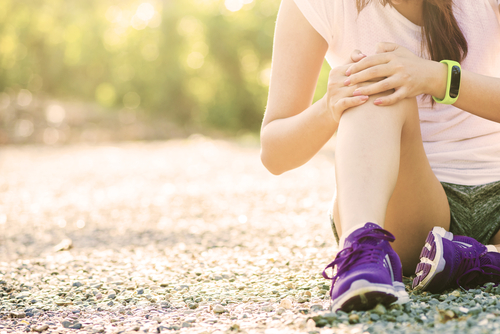
Across Long Island, we’re still doing our best to adjust to quarantine. As the COVID-19 pandemic continues to keep us indoors, we’re struggling to stay healthy and active while stuck in our houses. In a previous post, we discussed ways to maintain exercise routines during lockdown. However, what happens if you injure yourself?
Obviously, most of us don’t want to contribute to hospital overcrowding. With our medical facilities overrun with coronavirus patients, naturally we’re reluctant to visit the emergency room. However, there are a few essential methods to care for minor injuries at home. With these, you should be back on your feet in no time!
Keep reading to learn more about common home injuries and how you can manage them on your own!
Common At-Home Exercise Injuries
Shin splints: These are some of the most common cardio injuries. Essentially, shin splints are small tears in your lower leg muscles, tendons or shin bones. These usually occur from overexertion of your leg muscles, or a sudden increase in exercise. Usually, you’ll experience aching, throbbing, and tenderness on the inside of your shin. At the start of a run, the pain is at its peak. However, once you warm up and loosen your leg muscles, you’ll alleviate the pain.
Hip pain: If you’ve been running uphill too much or training excessively, you may experience a hip flexor strain. In addition, exercises like Zumba and cardio can put a lot of strain on hip flexors. Common symptoms include muscle spasms, bruising or swelling around the hips. Additionally, you might feel stiffness after being stationary for a while.
Rotator cuff strain: Usually, rotator cuff strains come from improper form, training mistakes or excessive weight lifting. If the rotator cuff is not properly engaged, your deltoid’s upward pull may pinch your cuff against the shoulder blade and collar bone. Then, you’ll experience swelling or inflammation of the tendon which causes immense discomfort.
Sprained ankle: You may get a sprained ankle from running or walking on unstable or uneven terrain. Usually, when you sprain your ankle you’ll experience swelling, pain and limited range of motion.
Caring for Injuries At Home
The first couple of hours after a sports injury are the most critical. More often than not, this is when the pain, swelling, bruising, throbbing or aching comes into play. In addition, the affected area will be particularly sensitive.
Many sports medicine specialists and physicians use the acronym R.I.C.E. to encourage injury treatment protocol. Naturally, you can apply this acronym to many of the at-home sports injuries you experience from exercising.
REST: First and foremost, this is the most basic way to speed up the healing process. In the first few hours following an injury, your muscles are at their most vulnerable. You can encourage their swift healing by removing the affected muscles from activity and prevent aggravating them further.
ICE: Next, apply a bag of frozen vegetable, ice cubes or an ice pack to your injury. It won’t just help with the pain or discomfort you’re feeling. In addition, it will inhibit swelling by limiting blood flow to the affected area.
COMPRESS: Wrap your injury with an elastic bandage. This will allow fluid to drain from the area, minimizing swelling. Additionally, the bandage will provide some necessary support and serve as a reminder to you to rest and remain still. However, be sure not to wrap the bandage too tightly! If you feel numbness, tingling or an increase in pain, loosen the bandage.
ELEVATE: It also helps to elevate the injury above your heart level to reduce swelling. Use pillows to help prop up any of the affected areas.
For the first 48-72 hours, continue to apply the R.I.C.E. protocol. In addition, you can take over-the-counter pain relievers like aspirin or ibuprofen to help minimize pain and discomfort.
Conclusion
If you have an injury that doesn’t improve with your at-home treatment, contact a sports medicine specialist right away. At Central Orthopedic Group, we’re still here, adjusting our hours of service weekly and continuing with TeleMedicine.
Understanding the most basic exercise injuries and treatments will help you get back on your feet quickly and safely! For more information, contact Central Orthopedic Group today!
